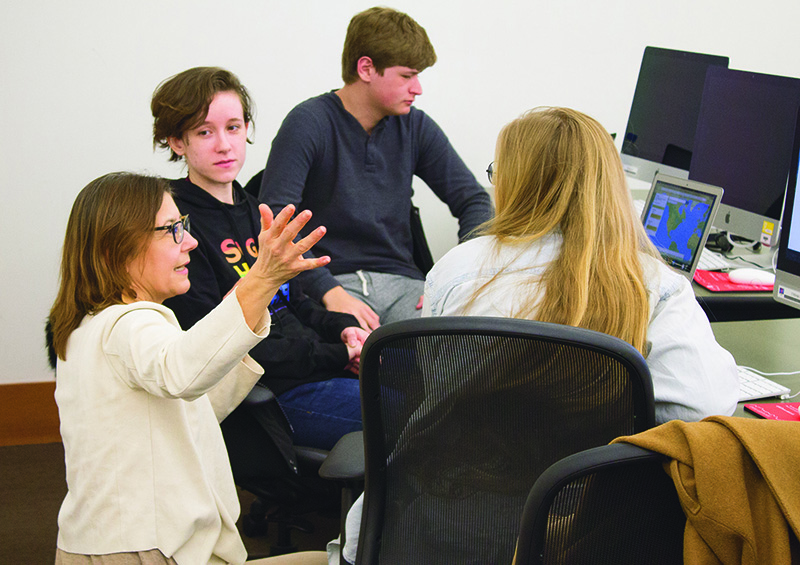
Students in a new course, “Coming to America,” taught by a German and a Spanish professor are learning about immigration. The course combines this timely topic with cutting-edge research in the digital humanities in a hands-on way. Professor of German, Karin Baumgartner, and Associate Professor of Spanish, Gema Guevara, are co-teaching the course. With the close collaboration of librarians in the U’s Marriott Library, students in the class are learning about digital humanities tools that will enhance both their research skills and their final projects.
The course is co-taught between German, Spanish and Comparative Literary & Cultural Studies (CLCS), which is a first for the Department of World Languages and Cultures. “Collaborating like this makes a lot of sense especially in our department, since immigration to the United States is a topic that connects all language sections,” Baumgartner said. “Since Germans were the largest immigrant group in the 19th century, and Latinos/as are the largest immigrant group in the 20th/21st century, this combination allows for a historical overview over immigration and puts contemporary discourses into a historical perspective. We hope to teach deeper knowledge about the history of immigration; tolerance toward immigrants and skills to read and analyze pro- and anti- immigrant discourses.”
For the final project, students will present a digital project rather than a paper. This is where digital humanities tools are being introduced to the students with the help of Baumgartner, Guevara, and Digital Humanities librarians at the Marriott Library. Both Baumgartner and Guevara were able to attend a one-week digital humanities workshop at the University of Victoria (British Columbia, Canada) after receiving a teaching grant from the University of Utah. “By bringing the Humanities (Literature and Culture in our case) into the digital, we are meeting the students where they are comfortable,” said Baumgartner. “We believe that we are teaching skills (research, time management, online dissemination, negotiation between team members) that are in demand today (and maybe were not 10 years ago).”
“We are both incredibly grateful to the University of Utah teaching grant committee for allowing us to experiment with new pedagogy and putting so much faith in us,” said Baumgartner. “The digital humanities are not the only way of approaching the humanities (close reading is still my favorite) but it’s certainly an arrow in our quiver and we hope that it bridges the gap between college and work for our students.”
Yesenia Timoteo, a student in the course, said, “We are focusing on Mexican migration to Georgia. It was interesting to see why they went to Georgia, which was a very slave dominated state. We are focusing mainly on present day, because there isn’t really a lot of information before the 1980s.” Timoteo is working with classmate Trent Simmons on their final project. “I had no idea about these digital humanities tools before this class. In the beginning it was little stressful, but now as we are learning more things, it is making more sense and is pretty easy. There are a lot of things you can learn in this class that you could easily use in other classes,” Simmons said. Timoteo added, “It broadens your opportunities on where to do your research.”
Tyler Israel is working on this project with Valerie McKinnon, who feels deeply connected to their field of research. “This topic feels personal. My husband is from Mexico, and it is something that is really close to my heart, in a way,” she said. “I cannot, on any level, dehumanize these people in my head and objectify them and say ‘well, they need to go home’ – this is home for them. How we talk about them, and how we treat them is really important to me.”
“I wish they would have taught us about some of these digital humanities tools as a Freshmen. It would have made doing a research paper 30 times easier." Israel added with a smile.
